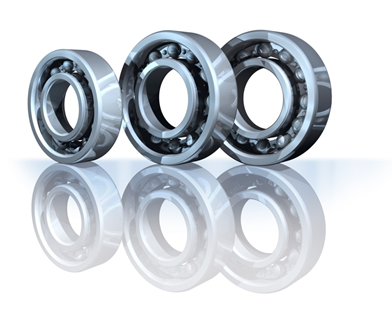
Guest blog by Barton Henderson, Manager at Statewide Bearings
All machine elements are subject to damage and malfunction. To minimize these damages, choosing the right part for the right job is essential. Every metal has its own specific properties and comes in many different grades of quality. Leaving out the difference between one type of material and another can lead to significant damages to both the material and the machine in which it functions.
Manufactured for a Function
It’s obvious that if you intend to use structural components and mechanisms in strenuous conditions, the part must be constructed with the capacity to endure these conditions. Working in high temperatures is very different than with high speeds. A machine built to handle heavy loads needs very different components than a machine built to run underwater.
Some bearings, for instance, are specifically shaped to handle the severe vibrations of high speeds. On the other hand, others are built to resist softening and deformation under high temperatures. If you are using a component for a task it is not adequately suited for, the consequences can be dangerous and awfully costly. Even components made out of other materials, such as plastics and different grades of rubber must be used for their specific purpose. For example, a flat belt meant specifically for durability in extremely low temperatures will not work well when used in a normal temperature and high tension environment.
The Levels of Speed
For many components, the choice of metal used depends heavily on the speed of operation of the component. In the case of bearings, fluid film bearings are usually favoured for low speed operation. They require little to no maintenance, have a long lifespan, and are much cheaper than other types of bearing with an equivalent load rating. These are usually made of cheaper metals such as bronze or bronze alloys. Despite the choice of metal being important, there are naturally other factors that can influence the deterioration of a component. Not fulfilling the required oil film thickness is an example. The manufacturer of any bearing does not have information about the cleanliness of surface and quality of the oil being used. As the fabricator of the component does not provide this information, you must multiply the minimum oil film thickness by a factor of two for safety.
At moderate speeds, most bearings can handle the charge. The structural design limit of bearings can be up to six times that of its rated load value. These bearings are usually made out of white metal alloys such as tin-copper or tin-lead, which are often favoured over others because of the shock-resistance, the toughness and the low coefficient of friction of these alloys. At moderate speeds, the practical temperature limit of most bearings, about 130 degrees Celsius, is not reached.
At high-speed operations, the temperature mentioned above is rarely reached, but in some applications, the component will need to handle much higher temperatures and the type of metal used is especially important. In the case of bearings, an extra layer of support, which overlaps the original bearing, must be added. This extra layer, which is often made out of a chrome-copper alloy, reduces the amount of elastic and thermal deformation of the bearing. They absorb the heat of the bearing and can even allow it to resist up to twelve additional Celsius degrees. Chrome-copper alloys do improve the functioning of bearing housings at high-speed, but does not offer these same advantages at low-speeds.
Heavy Damages and Consequences
If the right metals are not being used, the damages as a result can cause some heavy consequences. The most common type of wear is abrasive wear. This occurs when small particles, such as fine pieces of detaching metal, get in the way of the moving components. The blockage wears the component, causes ineffective work and even damages other parts of the machine. Another type of wear, which is almost as frequent, is pitting and bruising of the mechanism. If a metal is too soft, it can easily degrade because of such damages.
Using the wrong kind of metal can also cause early etching. Etching, also known as corrosion, is a more serious problem as it can render a component completely useless and impossible to repair. If the wrong kind of metal alloy is used, it will be inadequately protected from the water or the humid environment in which it is being used. A last consequence of not using the proper metal is spalling. This type of wear, which usually appears on rolling components, takes place when the outer part of the element’s material flakes away. Although these types of damages can be caused by the use of the wrong metal, it is also caused by other factors such as external dirt and lack of maintenance.
What Else Should you Know?
In extreme environments, such as the inside of an oven, of a dryer or deep underwater, most people will choose to use graphite and copper alloy metals. Often known by its trademarked name “Graphaloy” these alloys are specifically useful for two reasons; the lubricating characteristic of graphite and the durability of copper in very high and very low temperatures make it a metal of choice for these environments. Graphaloy even makes components intended for the vacuum of space! Furthermore, certain pieces and components necessitate an approval. For instance, if you need to use machine elements for food machinery, the part must be accepted by the FDA and NSF.
There are more applications to components than we can count and the choice of metal can sometimes be overwhelming. This complexity can sometimes get confusing but it’s important to remember that the choice of metal plays a significant role in the proper function of any machine.
Author Bio
Barton Henderson is Manager at Statewide Bearings, distributors of bearings, lubrication and other essential parts for construction and mining machinery with branches right around Australia. Connect with Barton on Google+.
